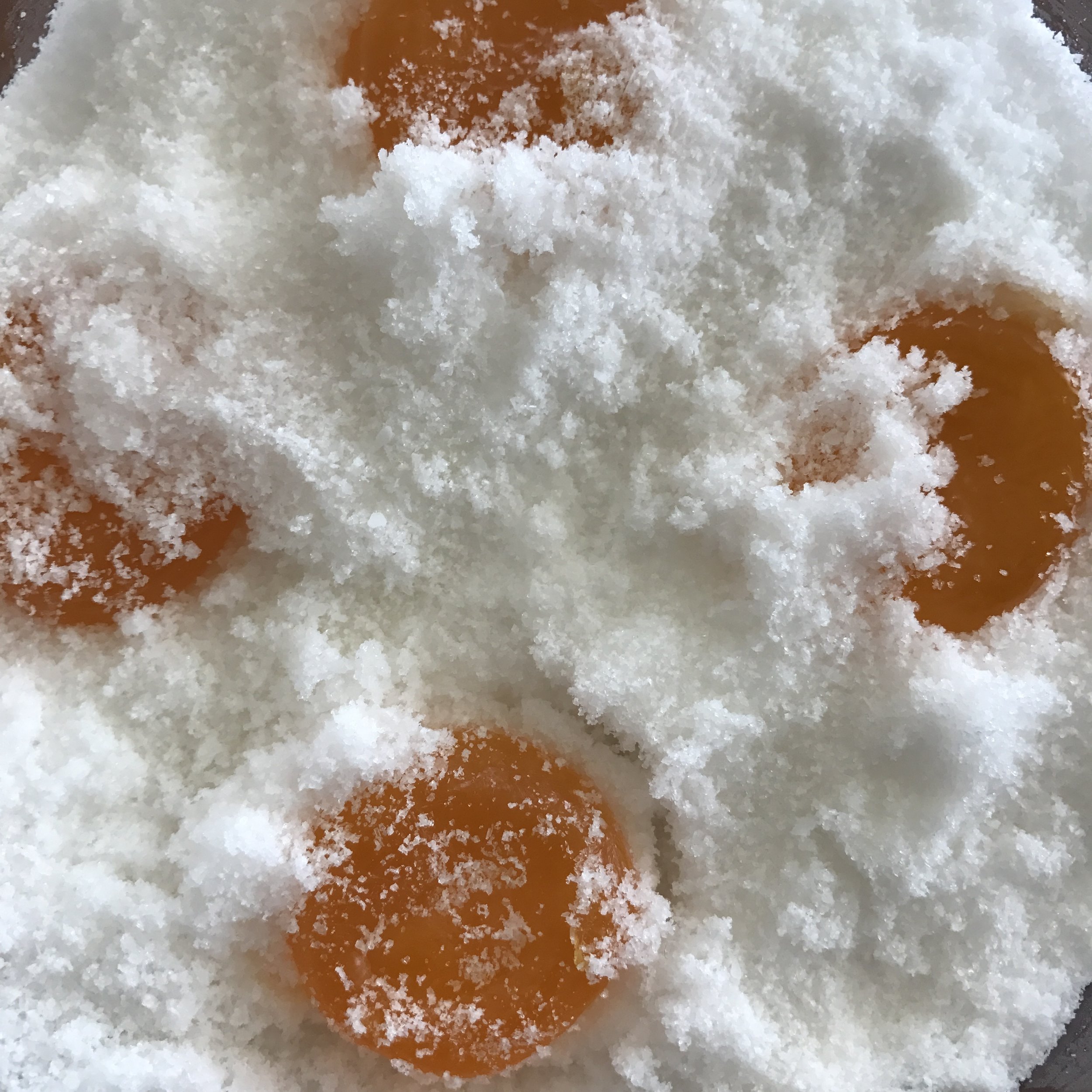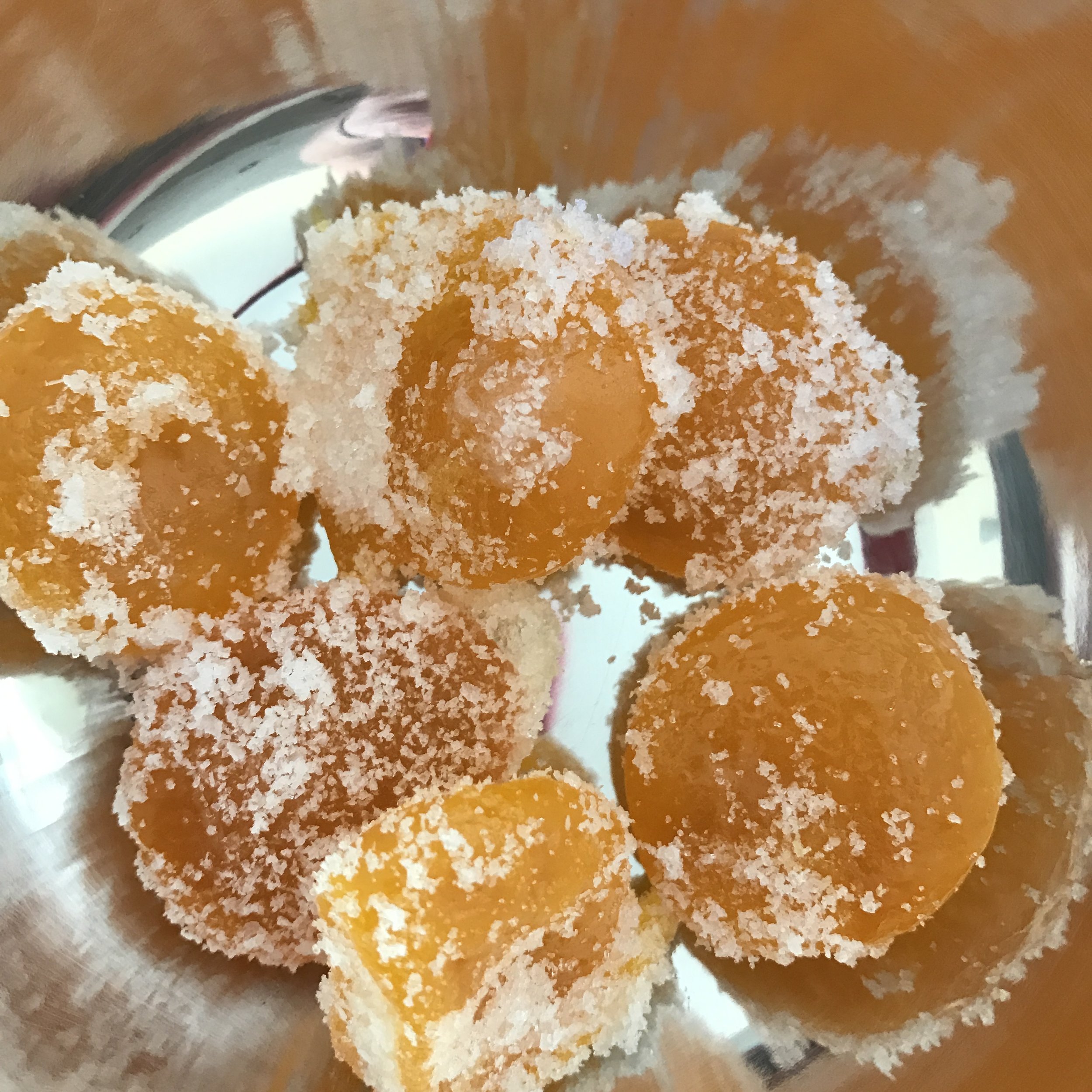Cured Egg Yolks
About a couple of months ago an interesting food video popped in my Instagram feed. Social media in general, but Instgram in particular, is so flooded with food videos and images that it takes something really distinctive to catch my attention. The most memorable tend to center around beautiful presentation rather than the food itself. So I was quite surprised when I found a rare Instagram story that focused on an actual food I had not yet heard of … cured egg yolks.
So what is a cured egg yolk? That is the question I invariably get every time I mention these jewel-like golden spheres to someone, including some very knowledgeable food enthusiasts and professional chefs. Let’s start with defining curing… Curing is the process of drawing out moisture through osmosis. In the process, the bacteria that makes food go bad is killed off and the food is left in a preserved state. How is this achieved? Typically the food is covered/buried in a mixture of salt and/or sugar and left to rest for a few days. It can also be dehydrated or smoked. Often, a combination of these methods is used. Common cured foods include lox and hams like prosciutto and jamón Serrano. Originally, curing was used as a method of preserving food when refrigeration didn’t exist. Nowadays, foods are cured out of tradition or to achieve a certain texture or flavor profile.
Now back to eggs or more specifically egg yolks. While I am quite experienced at preserving and curing, conceptually, I had a hard time understanding how something as delicate and fragile as an egg yolk could be cured. I also was wondering how you would use them. Fortunately, due to a recent macaron-making marathon, I had plenty of spare yolks to cure. So using my past experience curing salmon, I set out to figure out the right proportion of salt to sugar. I decided to try two different ratios: 60/40 salt to sugar and 50/50 salt to sugar.
Recipe 2
1 ½ cup Kosher salt
1 ½ cup sugar
6 egg yolks
Recipe 1
1¾ cups Kosher salt
1¼ cups sugar
6 egg yolks
For each recipe, I mixed the sugar and salt together and put half in the bottom of a baking dish. Using a the bottom of a whole egg, I created indentations where I then carefully deposited each egg yolk. I then covered the yolks with the remaining salt/sugar mixture. I covered the dish with plastic wrap and placed it in the refrigerator for about four or five days. I then removed the egg yolks from the salt mixture. At this point, the salt mixture had absorbed a lot of humidity and clumped easily. The egg yolks were pretty solid and had a deep golden color. I quickly rinsed the excess salt and sugar off the egg yolks and put them on a rack set on a baking sheet. I placed the baking sheet into a 200° F and allowed the egg yolks to dry out in the oven for about two hours.
At that point, they were ready. Using a microplane, I grated them onto pasta in lieu of Parmesan cheese. I also tried them crumbled into a bowl of tomato bisque. I particularly enjoyed a generous portion grated on top of an avocado toast. With the grated cured egg yolks on top of it, the otherwise bland avocado didn’t require any additional seasonings. Basically, grated cured egg yolks add a nice umami element – savory, rich and yummy!
The cured egg yolks can be kept in an airtight container in the refrigerator for up to a month.
In terms of the two recipes I tried, both worked fine and it really boils down to personal preference. The first batch (~60% salt) was quite salty when I tasted it by itself. But worked really well for heavier foods such as pastas and soups. The second batch (50% salt) was more delicate and well balanced and it prove to be the perfect compliment for vegetables and steamed rice.
Let me know below which of the two recipes is your favorite.



